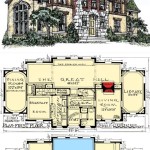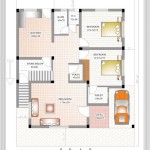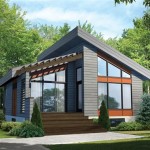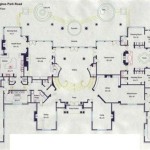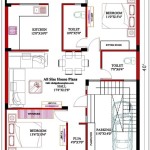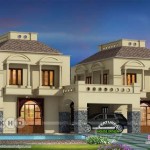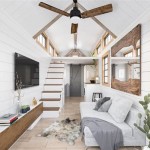East Facing House Plan According To Vastu
Vastu Shastra, the ancient Indian science of architecture, provides guidelines for creating harmonious and prosperous living spaces. When planning a house, especially an east-facing one, incorporating Vastu principles can significantly impact the well-being of the residents. An east-facing house is considered auspicious in Vastu, as it welcomes the morning sun, which is believed to bring positive energy, vitality, and good health. However, simply having an east-facing entrance is not sufficient; careful attention must be paid to the layout, placement of rooms, and the orientation of various elements within the house.
Designing an east-facing house according to Vastu involves understanding the energy flow and aligning the structure and its functions to maximize positive influences. This includes considering the location of the main entrance, living room, kitchen, bedrooms, and other areas, as well as the placement of compound walls, gates, and water bodies. Every aspect of the house is analyzed to ensure that it harmonizes with the natural elements and promotes a balanced and supportive environment for the occupants.
Understanding the Significance of the East Direction in Vastu
The east direction, governed by the Sun (Surya), holds immense importance in Vastu Shastra. The Sun is the source of all energy and life, and its rays are considered highly beneficial for health, vitality, and overall well-being. In Vastu, it is believed that an east-facing house that is properly aligned allows the beneficial solar energy to enter the house freely, creating a positive and energizing atmosphere. This direction is associated with new beginnings, growth, and spiritual enlightenment. Homes facing the east are believed to attract prosperity, success, and harmonious relationships among family members.
The eastern side of the house should ideally be more open and less burdened with heavy structures or obstructions. This allows for maximum sunlight penetration, which not only brightens the space but also helps to eliminate negative energies and promote a healthy indoor environment. The eastern wall should be lighter compared to the western wall, both in terms of construction and color. This facilitates the absorption of morning sunlight and minimizes the impact of the harsh afternoon sun.
Furthermore, the proper placement of windows and doors in the east is crucial. They should be positioned to allow for ample sunlight and ventilation, ensuring that the home remains well-lit and airy throughout the day. According to Vastu, blocking the eastern direction can lead to health problems, stagnation in career growth, and disharmony within the family. Therefore, it is essential to keep this direction clear and unobstructed.
Key Vastu Principles for an East-Facing House Plan
Designing an east-facing house according to Vastu requires adherence to specific guidelines related to the placement of various areas and elements. These principles are designed to ensure that the house is in harmony with the natural energies and promotes a positive and balanced environment. Some of the key Vastu principles for an east-facing house include:
Entrance: The main entrance of an east-facing house should ideally be located in the northeast or east side of the house. These locations are considered highly auspicious and are believed to attract positive energy and prosperity. Avoid placing the main entrance in the southeast corner, as this can bring negative energies and health problems. The entrance should be well-lit and inviting, and the door should open inwards to allow positive energy to enter the house.
Living Room: The living room, being the primary space for interaction and relaxation, should ideally be located in the northeast or east direction. This allows for ample sunlight during the morning hours, creating a vibrant and welcoming atmosphere. The furniture in the living room should be arranged to allow for easy movement and interaction, and avoid cluttering the space. Light colors and natural materials are recommended for the décor to enhance the positive energy flow.
Kitchen: The kitchen, being the heart of the home, should be located in the southeast direction or the northwest direction. The southeast is governed by Agni (fire), the deity associated with cooking and nourishment. If the kitchen is located in the northwest, ensure that the cooking stove is oriented towards the southeast. Avoid placing the kitchen in the northeast corner, as this can lead to health problems and financial instability. The kitchen should be well-ventilated and well-lit, and clean and organized at all times.
Bedrooms: The master bedroom should ideally be located in the southwest direction, as this direction is considered stable and conducive to rest and relaxation. Children's bedrooms can be located in the northwest or west direction. Avoid placing bedrooms in the northeast corner, as this can lead to health problems and mental stress. When sleeping, the head should ideally be oriented towards the south or east, as this aligns with the Earth's magnetic field and promotes restful sleep.
Bathrooms: Bathrooms are considered spaces where negative energy can accumulate, so their placement is crucial. Avoid placing bathrooms in the northeast corner or the center of the house. The ideal locations for bathrooms are in the northwest or southeast directions. Ensure that bathrooms are well-ventilated and clean to prevent the accumulation of negative energy. Proper drainage is also essential to avoid stagnant water, which can attract negative influences.
Staircase: Staircases should ideally be located in the south, west, or southwest directions. Avoid placing staircases in the northeast corner, as this can lead to financial difficulties and health problems. The staircase should be constructed in a clockwise direction and should be sturdy and well-lit. Spiral staircases are generally not recommended in Vastu.
Water Bodies: If you plan to have a water body like a swimming pool or a fountain, it should be located in the northeast direction. This direction is associated with water and is considered highly auspicious for water bodies. Avoid placing water bodies in the southwest direction, as this can lead to financial instability and relationship problems. Ensure that the water is clean and flowing to promote positive energy.
Practical Considerations for Implementing Vastu in an East-Facing House
While adhering to Vastu principles is essential, it is also crucial to consider practical aspects such as the size and shape of the plot, the orientation of the house, and the needs of the residents. Implementing Vastu in an existing house can be challenging, but it is possible to make modifications to improve the energy flow and create a more harmonious living environment.
When designing a new house, it is best to consult with a Vastu expert to ensure that the plan is aligned with the principles of Vastu Shastra. The expert can assess the plot, analyze the orientation, and provide customized recommendations for the layout and placement of various elements within the house. This can help to maximize the benefits of Vastu and create a truly harmonious and prosperous home.
If you are living in an existing house, there are several simple remedies that can be implemented to improve the Vastu. These include:
Color Therapy: Using appropriate colors in different rooms can help to balance the energy and create a more positive atmosphere. Light and bright colors are generally recommended for the east direction, while earthy tones are suitable for the south and west directions.
Placement of Mirrors: Mirrors can be used to enhance the positive energy and correct imbalances. Avoid placing mirrors in front of the main entrance or in bedrooms facing the bed. Mirrors should ideally be placed on the north or east walls to reflect positive energy.
Use of Plants: Plants are excellent for purifying the air and bringing positive energy into the house. Place plants in the northeast corner or near windows to enhance the flow of natural energy. Avoid placing thorny plants inside the house.
Decluttering: A cluttered space can impede the flow of energy and create a negative atmosphere. Regularly declutter the house and get rid of unwanted items. Keep the house clean and organized to promote positive energy and harmony.
Vastu Yantras: Vastu yantras are geometrical diagrams that are believed to attract positive energy and mitigate negative influences. Placing Vastu yantras in specific locations within the house can help to correct imbalances and create a more harmonious environment.
In conclusion, planning an east-facing house according to Vastu involves careful consideration of various factors, including the orientation, layout, and placement of different areas and elements. By adhering to the principles of Vastu Shastra and incorporating practical considerations, it is possible to create a harmonious and prosperous living space that promotes the well-being of the residents.

25 50 House Plan East Facing As Per Vastu Best Duplex

25x50 House Plan East Facing As Per Vastu Map 3d Plans Floor

25x50 East Facing Floor Plan House And Designs Books

25x50 House Plan With East Facing Arch Naksha

25 50 House Plan 3bhk Duplex

25x50 House Plan East Facing As Per Vastu Map

25 50 House Plan Best 2bhk 3bhk

Best 3bhk 25x50 House Plan 1bhk 2bhk 25 By 50 Plans

25 50 House Plan 3bhk Duplex

25 By 50 House Plans 1250 Sqft Plan Best 3bhk

